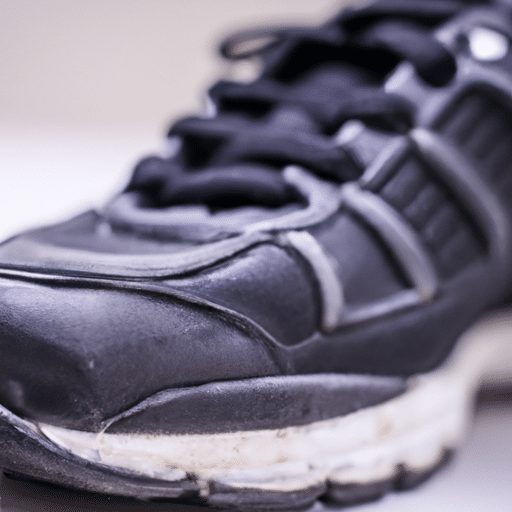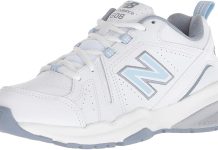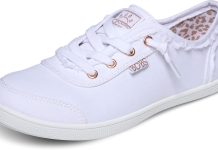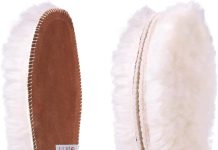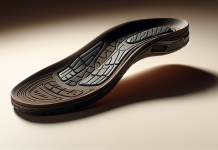Walking is a fantastic way to stay fit and explore the world. However, if calluses start forming on our feet, they can quickly damper our walking adventures.
Nobody wants to deal with painful and unsightly calluses, so we’re here to share tips and tricks to prevent them while walking.
From choosing the proper footwear to keeping our feet moisturized, we’ll help you put your best foot forward and enjoy a callus-free walking experience.
Choosing the Right Shoes
When choosing the right shoes for walking, there are a few key factors to consider. The first step is selecting the proper size. Ill-fitting shoes can cause discomfort and lead to various foot problems, such as blisters and calluses.
Measuring your feet before purchasing new shoes is essential to ensure the perfect fit. Remember to measure both feet, as they may not be the same size. Look for shoes that provide enough room for your toes to wiggle comfortably without being too tight or too loose.
In addition to size, opting for shoes with cushioning is crucial for preventing calluses while walking. Cushioned shoes provide a layer of protection and shock absorption, reducing friction and pressure on your feet.
Look for shoes with adequate padding in the midsole and heel area. This extra cushioning can help prevent calluses from forming by minimizing the impact of each step and reducing the friction between your foot and the shoe.
Another essential consideration is arch support. Choosing shoes with proper arch support can help distribute weight evenly across your feet and prevent excessive pressure on specific areas, such as the ball of the foot and the heel. Look for shoes with built-in arch support or consider using orthotic inserts to support your feet.
Wearing the Right Socks
While choosing the right shoes is essential, wearing the right socks is equally important for preventing calluses while walking. When selecting socks, opt for moisture-wicking materials like nylon or merino wool. These materials help keep your feet dry by wicking away moisture, reducing the risk of friction and blisters. Avoid cotton socks as they retain moisture and can contribute to friction and irritation.
In addition to moisture-wicking properties, picking the right thickness of socks is also crucial. If your shoes are already snug, opt for thin socks to prevent unnecessary pressure on your feet. On the other hand, if you have loose-fitting shoes or prefer more cushioning, choose thicker socks for added comfort and protection.
Seam-rubbing is a common cause of irritation and the formation of calluses. To avoid this issue, look for socks with seamless construction or use padded socks with additional cushioning around areas prone to friction, such as the toe and heel. By choosing socks that minimize friction and irritation, you can reduce the risk of calluses and keep your feet comfortable during your walks.
Taking Proper Care of Your Feet
Taking proper care of your feet is essential for preventing calluses and maintaining overall foot health. One of the first steps in foot care is keeping your feet clean and dry. Clean your feet daily with mild soap and warm water, and thoroughly dry them, especially between the toes. Moisture can contribute to skin softening, making calluses more likely to form.
Moisturizing your feet regularly is another important aspect of foot care. Use a moisturizer specifically formulated for the feet to keep the skin hydrated and prevent dryness and cracking. However, avoid applying moisturizer between the toes, as excess moisture in this area can promote fungal growth. By moisturizing your feet daily, you can help maintain their natural elasticity and reduce the risk of calluses.
Trimming your toenails correctly is also crucial. Toenails that are too long or improperly trimmed can cause friction and pressure on your toes, leading to calluses. Trim your nails straight across and avoid cutting them too short to prevent ingrown toenails. Use a nail file to smooth rough edges and maintain a proper length. Regular toenail maintenance can help prevent calluses caused by improper nail care.
Preventing Friction and Pressure Points
Friction and pressure are significant contributors to callus formation, especially during walking. To prevent calluses caused by these factors, there are several strategies you can use. One option is to use moleskin or gel padding on areas that are prone to friction, such as the heel or the ball of the foot. Moleskin is a soft material that can be cut and applied to the desired area, providing a protective barrier against friction and reducing the risk of calluses.
Applying petroleum jelly or lubricant is another effective method for preventing friction-related calluses. Before starting your walk, apply a thin layer of petroleum jelly or lubricant to areas where your shoes tend to rub against your skin. This creates a smooth surface that reduces friction and minimizes the chances of calluses developing.
For individuals who have structural foot abnormalities or experience pressure points, wearing spacer pads can help alleviate these issues. Spacer pads are soft cushions that can be placed between toes or under pressure points to distribute weight evenly and reduce pressure. Spacer pads can help prevent calluses from forming in specific areas by providing additional support and cushioning.
Avoiding Excessive Walking on Hard Surfaces
Walking on hard surfaces for extended periods can increase the risk of calluses due to the constant impact and pressure on your feet. To minimize this risk, it’s essential to take certain precautions. Using shock-absorbing insoles in your shoes can help absorb some of the impact, reducing the strain on your feet. These insoles provide extra cushioning and support, making your walking experience more comfortable and minimizing the chances of callus formation.
Taking breaks and resting your feet during long walks is crucial to prevent excessive pressure and potential calluses. Listen to your body’s signals, and if you start feeling discomfort or fatigue in your feet, take a moment to sit down, remove your shoes, and give your feet a break. This allows your feet to recover from the stress and reduces the chances of developing calluses.
An alternative to walking on hard surfaces is to seek out grass or dirt paths. Walking on softer surfaces can help absorb some of the impact and reduce the pressure on your feet. If possible, incorporate nature trails or park paths into your walking routine to give your feet a break from the harshness of rigid pavements.
Improving Your Walking Technique
Maintaining a proper walking technique is essential for efficiency and reducing the risk of calluses. It all starts with maintaining proper posture. Stand tall with your shoulders relaxed and your head held high. Engage your core muscles to support your spine and maintain a neutral alignment. Proper posture ensures that your weight is distributed evenly and minimizes the strain placed on your feet.
Avoid overstriding, which is taking too long steps for your natural gait pattern. Overstriding can increase the impact on your feet and cause friction, leading to calluses. Instead, focus on taking smaller, controlled steps. This allows your feet to roll smoothly from heel to toe, reducing the pressure on specific areas and preventing callus formation.
Walking with a proper gait is also crucial. Ideally, your foot should strike the ground with the heel first, roll smoothly through the middle of the foot, and finally push off with the toes. This natural gait pattern helps distribute weight evenly and reduces the chances of excessive pressure and friction. Pay attention to your foot placement and maintain an efficient walking motion to minimize callus formation.
Building Up Your Walking Distance Gradually
If you’re starting a walking routine or increasing your walking distance, it’s essential to do so gradually. Jumping into long walks too quickly can overload your feet and increase the risk of calluses and other foot problems. Start slow and gradually increase your pace and distance over time.
Listen to your body’s signals and pay attention to any discomfort or pain. Your body will let you know if you’re pushing too hard. If you start experiencing any foot pain or notice the formation of calluses, it may be a sign that you’re pushing yourself too far. Step back, decrease your walking distance, and give your feet time to adjust and recover.
Avoid making abrupt changes to your walking routine. Gradual progress allows your feet to adapt and strengthen to handle longer walks. This gradual approach reduces the risk of developing calluses and ensures a safer and more enjoyable walking experience.
Using Protective Coverings
In addition to choosing the right shoes and socks, using protective coverings can further prevent callus formation while walking. Toe caps or toe sleeves provide extra protection for your toes, especially if you tend to develop corns or calluses in that area. These coverings create a barrier between your toes and your shoes, minimizing friction and reducing the risk of callus formation.
If you have blisters, using bandages or moleskin can help prevent further irritation and the formation of calluses. Apply the bandage or moleskin directly over the blister, covering it completely. This provides cushioning and reduces friction, allowing the blister to heal without further complications. Remember to change the bandages regularly to maintain cleanliness and promote healing.
For individuals with calluses, covering them with soft pads can help relieve discomfort and prevent further irritation. These pads act as a cushion, reducing friction and pressure on the callus. They can be applied directly over the callus and offer immediate relief. Soft pads are available in various shapes and sizes, making it easy to find the perfect fit for your needs.
Managing Medical Conditions
If you have foot conditions such as bunions, hammertoes, or plantar fasciitis, addressing these issues is essential to prevent callus formation during walking. Treating these conditions may involve wearing orthotic devices or using specialized footwear to alleviate pressure and correct foot alignment. Consult with a healthcare professional or podiatrist to determine the best action for managing your specific foot condition.
If you experience persistent foot pain or discomfort or notice any unusual changes or symptoms, seeking professional advice is essential. A podiatrist or dermatologist can provide a thorough evaluation, diagnose any underlying conditions, and recommend appropriate treatments or interventions to prevent calluses and maintain foot health. Early intervention can prevent the progression of foot problems and ensure your walking routine remains comfortable and enjoyable.
For individuals with diabetes, proper foot care is even more critical. Diabetes-related foot issues, such as neuropathy and poor circulation, can increase the risk of calluses and prevent proper wound healing. Regular foot examinations, careful attention to hygiene, proper footwear, and close monitoring of any changes or abnormalities are essential for individuals with diabetes. If you have diabetes, consult with a healthcare professional who specializes in diabetes foot care for personalized guidance and recommendations.
Knowing When to Seek Medical Attention
While preventive measures can significantly reduce the risk of calluses while walking, there are instances where medical attention may be necessary. Recognizing signs of infection is crucial in determining when to seek medical help. If you notice any redness, warmth, swelling, or pus at a callus or blister site, it may indicate an infection. Infection can lead to more severe complications if left untreated, so it’s essential to consult a healthcare professional for appropriate diagnosis and treatment.
If you have persistent or recurring calluses that do not improve with home remedies or preventive measures, it may be time to seek a consultation with a podiatrist or dermatologist.
These healthcare professionals specialize in foot care and can provide a comprehensive evaluation of your feet, identify any underlying causes, and recommend suitable treatment options. They can offer specialized interventions, such as debridement of calluses or custom orthotics, to effectively manage your foot condition and prevent further callus formation.
In summary, preventing calluses while walking requires a multi-faceted approach that includes choosing the right shoes, wearing the right socks, taking proper care of your feet, preventing friction and pressure points, avoiding excessive walking on hard surfaces, improving your walking technique, gradually building up walking distance, using protective coverings, managing medical conditions, and knowing when to seek medical attention.
By implementing these strategies and prioritizing foot health, you can enjoy a comfortable and callus-free walking experience.

